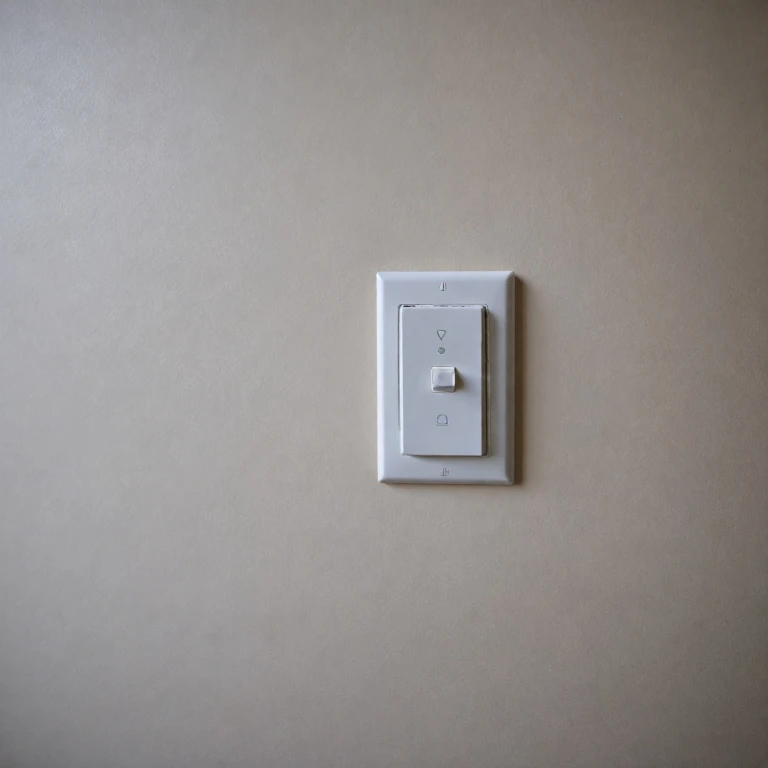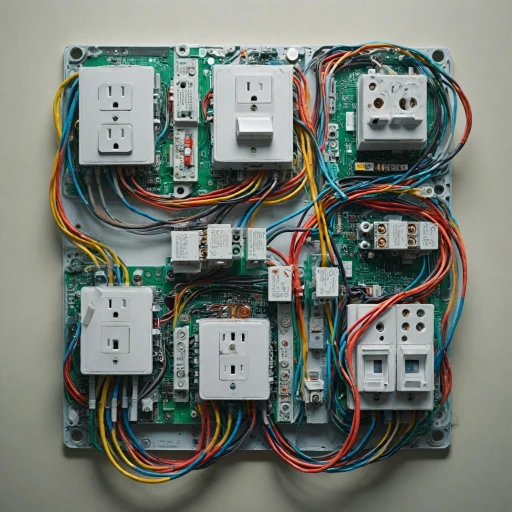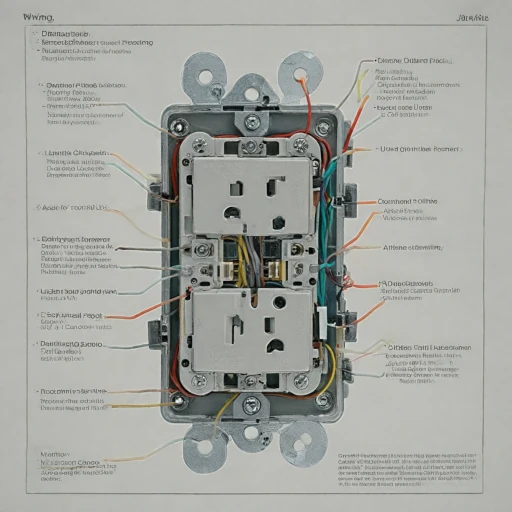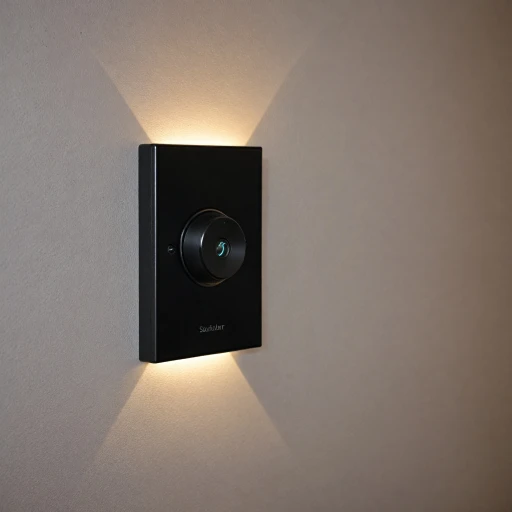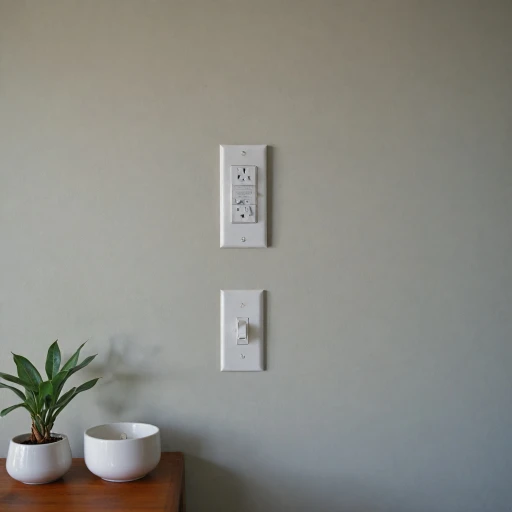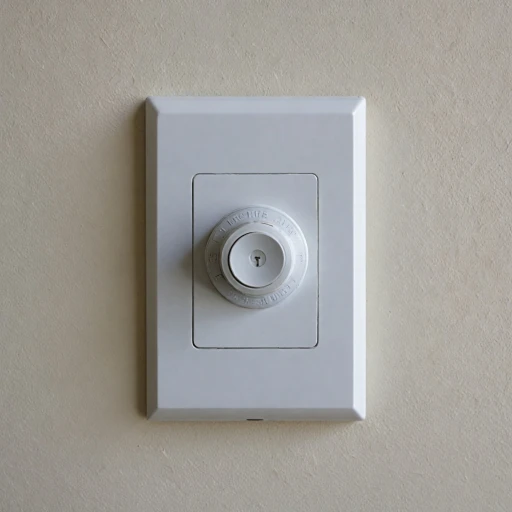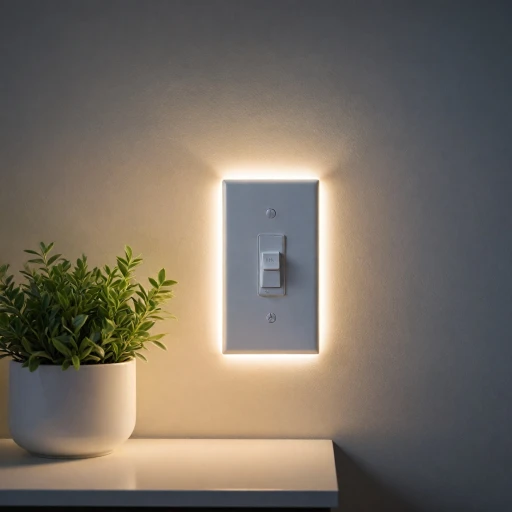
The Basics of Smart Light Switches
The Foundation of Smart Lighting Systems
The advent of smart light switches has revolutionized how we interact with our home lighting systems. Unlike traditional wall switches, smart switches offer the convenience of wireless control, allowing you to manage your lights through apps and compatible platforms such as Amazon Alexa. However, understanding the basics of these devices is crucial to fully appreciate their functionalities and the challenges they present, especially when a neutral wire is not available.
A smart light switch essentially functions as an advanced wall switch that integrates with your home Wi-Fi network. One of the primary aspects to consider with these switches is the power source. Most smart switches require a continuous flow of power to maintain their connectivity and smart features. This power is typically drawn from the neutral wire, which is a standard in many modern homes but not always available in older setups. Without this wire, powering these smart devices can become problematic, as they may not function correctly or at all.
Despite these challenges, there are solutions available for homes without a neutral wire, which might involve specific types of wireless dimmer switches that don't require one, or trying relay technologies. These alternatives offer a way to enjoy smart lighting control without the need for major electrical overhauls.
Smart light switches offer several advantages over traditional switches, including automation and the ability to control multiple bulbs across various rooms from a single interface. As the technology evolves, understanding the infrastructure required—like whether a neutral wire is needed—and keeping abreast of the latest compatible models can be key to a successful smart lighting setup tailored to your home.
Challenges of Installing Smart Light Switches Without a Neutral Wire
Common Obstacles When Installing Without a Neutral Wire
Installing a smart switch without a neutral wire can be tricky due to some common challenges. Traditional light switches often require a neutral wire as part of the circuit to complete the circuit for the switch relay. When smart lighting is involved, the absence of this wire can pose several hurdles. Here's a breakdown of the challenges you might face:
- Powering the Switch: One of the biggest obstacles is providing continuous power to the smart switch. Without a neutral wire, the power can't flow properly, affecting the smart switch's ability to remain connected to systems like wireless networks or smart assistants such as Amazon Alexa.
- Installation Constraints: Many homes have existing electrical boxes that may not accommodate additional wiring or different types of smart wall switches. Retrofitting these boxes without a neutral wire can be challenging.
- Device Compatibility: Some smart switches may not function effectively with certain types of light bulbs, like LEDs or other low-wattage bulbs, in the absence of a neutral wire. This is because the minimal power flow required to operate the switch can cause flickering or inconsistent operation.
- Additional Costs: Installing without a neutral wire might require purchasing additional products, such as a lamp dimmer switch, which can add to the project's regular price and complexity.
Overcoming these challenges involves exploring different solutions that can accommodate the absence of a neutral wire, as we'll delve into next. Stay tuned for viable solutions that provide more control over smart lighting systems.
Solutions for Homes Without a Neutral Wire
Practical Solutions for Homes Without a Neutral Wire
For many, retrofitting older homes with smart light switches can be daunting, particularly when there's no neutral wire present—increasing the complexity of smart lighting installations. Thankfully, several solutions allow you to enjoy the convenience of smart control without a complete rewiring of your home.- Capacitive Sensor Switches: Some smart switches operate using capacitive sensors. These can distinguish between a finger touch and a direct electrical contact, allowing for reliable control without needing a neutral wire.
- No-Wire Relay Modules: Wireless relay modules act like mini smart hubs and can be installed near your light fixtures or within the junction box. By connecting directly to the live wire, these modules transmit power back to the switch using a low-voltage signal wire.
- Smart Bulbs: Installing smart bulbs is the easiest solution if you are reluctant to change your existing wall switches. These bulbs are compatible with various ecosystems like Alexa and Google Home, offering a wireless and hassle-free setup.
- Battery-Powered Switches: Some manufacturers offer battery-powered smart switches that can wirelessly control your lighting. Although they might need frequent battery replacements, they can be paired with smart lighting systems for straightforward integration.
- Exploring versatile controllers may also provide an efficient workaround. In particular, a single-gang switch can offer multiple button configurations to manage various lighting scenes, adding versatility to your solution even without a neutral wire.
Benefits of Smart Light Switches Without a Neutral Wire
Smart light switches without a neutral wire offer a range of compelling benefits, making them an attractive choice for many homeowners. While they are designed to work seamlessly with limited wiring infrastructure, they still manage to deliver all the conveniences and efficiencies associated with smart lighting solutions.
Simple Installation in Older Homes
For homes that lack a neutral wire, smart light switches eliminate the need for costly rewiring. This allows for easy integration into the home’s existing electrical system, particularly in older properties. Traditional switches often require a neutral wire to complete the circuit, which isn't always present in older construction. By choosing smart switches that operate without this requirement, installation is much simpler and less intrusive.
Energy Efficiency and Control
Using smart technology, these switches can optimize energy consumption through features such as dimming and scheduling. By controlling the power to the lights more precisely, homeowners can reduce energy waste and lower electricity bills. For instance, being able to set schedules or control lights remotely ensures that lights are not left on when they are not needed, promoting energy efficiency.
Universal Compatibility
Many smart light switches are designed to work with various types of bulbs, including LED, CFL, and incandescent. This compatibility ensures that no additional purchases are required when upgrading to smart lighting, maintaining the versatility of controlling different lighting scenarios from a single switch.
Additionally, integration with voice-activated assistants, such as Amazon Alexa, enhances the convenience, allowing users to change lighting conditions effortlessly.
Increased Home Value
The adoption of smart lighting can also elevate the market appeal of a property. As smart homes become increasingly desirable, installing smart wall switches without a neutral wire adds a layer of modernity and sophistication to the home, potentially increasing its market value.
Embracing smart switches without a neutral wire provides a practical solution for lighting control and efficiency improvements without the hassle and expense of major electrical modifications. As the demand for sleek, user-friendly technology grows, these switches help bring contemporary living to a wider array of homes.
Popular Smart Light Switch Models Without a Neutral Wire
Top Models You Should Consider
When looking for smart light switches that don't require a neutral wire, it's essential to know which models excel in performance and convenience. Let's explore some top choices in the market:- Lutron Caseta Wireless Smart Lighting: Known for its reliability, Lutron Caseta offers smart switches that eliminate the need for a neutral wire. These smart switches can integrate seamlessly with Amazon Alexa, and their wireless technology ensures easy installation and control.
- GE Cync Smart Switch: This product offers a sophisticated power relay system that accommodates homes without a neutral wire. It's particularly user-friendly and supports voice control through Alexa, allowing for flexible lighting control and integration with various smart home systems.
- Leviton Smart Light Switch: Designed with a focus on versatility, Leviton's model allows for a single-pole installation. While similar to its counterparts in ease of use, it provides the user with advanced wireless capabilities that help efficiently manage lighting even without extensive wiring.
- Switchmate Slim Smart Lighting: This unique model stands out due to its simplicity and the fact that it attaches over your existing switches. It's a great way to transform your lighting to smart capabilities without the hassle of a complicated installation or any rewiring.
- C by GE Smart Light Switch: This model uses a smart relay to control lighting functions without the need for a direct neutral connection, making it ideal for older wiring setups. It also offers an economical price point.
Future Trends in Smart Lighting Technology
Emerging Innovations and Developments in Smart Light Technologies
The future of smart lighting is undoubtedly bright, with continuous advancements making it easier for users to integrate such systems into their homes, even without a neutral wire. Here are some promising trends and developments to look out for:
- Enhanced Wireless Control: New smart lighting solutions are focusing on more robust and reliable wireless control systems. These advancements reduce the dependency on traditional wiring setups, making smart light switches more versatile and user-friendly.
- Integration with Virtual Assistants: As technologies like Amazon Alexa gain widespread acceptance, there's a growing trend towards seamless integration of smart switches with these virtual assistants. This provides users with convenient voice control options to manage their lighting setups without the need for manual intervention.
- Energy Efficiency: Future smart lighting solutions are placing a strong emphasis on energy efficiency. By optimizing power consumption and integrating smart algorithms, these products aim to reduce electricity wastage, resulting in cost savings for users.
- Advanced LED Technologies: LED lighting is continually evolving. Upcoming smart lighting products are expected to offer better color rendering, increased lifespan, and enhanced dimming capabilities, all without the need for a neutral wire.
- Cost-Effective Options: As production scales, the regular price for smart wall switches, especially those that do not require a neutral wire, is expected to become more competitive, making smart lighting accessible to a broader audience.
- Universal Compatibility: A key trend is the development of smart relay technology that ensures compatibility with a diverse array of light bulbs and light switch setups, including older homes with outdated wiring.
Keep an eye on these trends as smart lighting technology continues to evolve, providing innovative and practical solutions for modern living spaces.
